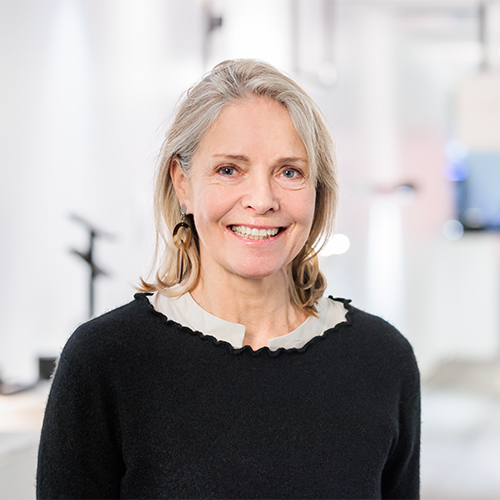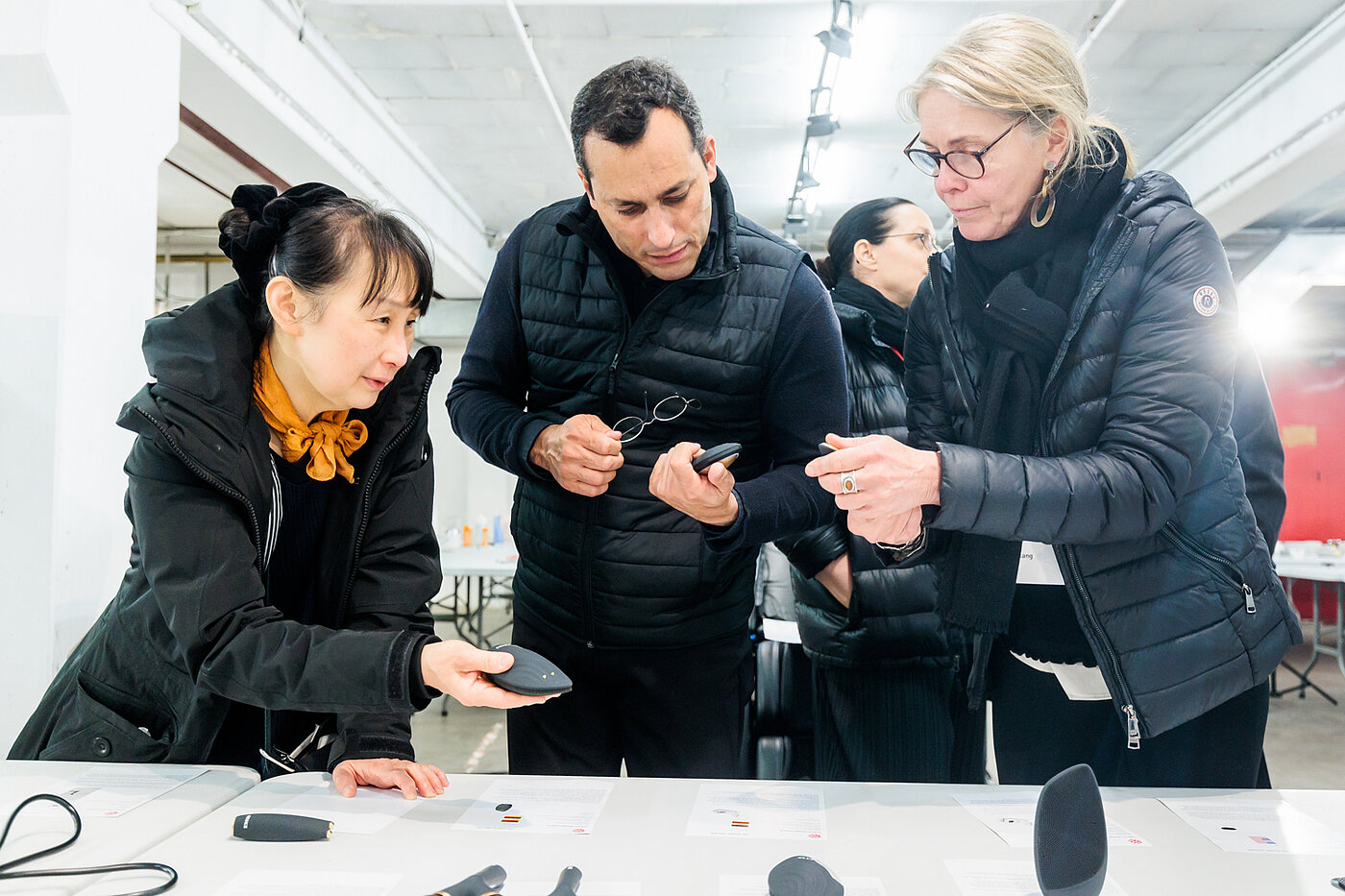Annette Lang
Annette Lang completed her industrial design studies with a degree from the State Academy of Fine Arts in Stuttgart in 1985. During her studies, she interned at FTI Design L.L. Lepois in Paris in 1983, and at Henry Dreyfuss Associates in New York in 1984. In the period between 1985 and 1988, she was employed by Studio Matteo Thun, Studio Antonio Cittero and Studio Sottsass Associati in Milan before setting up her own design studio in Wiesbaden, Germany. From 1989 to 1993, Annette Lang was assistant to Professor Richard Sapper at the State Academy of Fine Arts in Stuttgart and, subsequently, worked there as a guest lecturer. She has received numerous awards for her work, among them Design Plus, iF Design Award, Red Dot, FORM Design Prize and the European Ethical Award. She has been a jury member at the iF Design Award and Red Dot Award. In addition, her products are regularly on show in international exhibitions.

Red Dot in an interview with Annette Lang
Red Dot in an interview with Annette Lang
Red Dot: You design products for many different sectors. Do you have a particular favourite?
Annette Lang: I love designing everyday objects, ones that we hold in our hands on a daily basis, products that make our lives more beautiful, practical and, above all, more sustainable. Eco-friendliness and sustainability are becoming increasingly important factors in our work. So the question product designers are asking is: “How can I create everyday products that aren’t just aesthetically pleasing and timeless, but also durable and sustainable?”
When you design a product for a client, are you still able to infuse it with your own personality?
Commissioned designs generally mean following specific requirements related to the product and its function, as well as working within the company context and the market framework. All the same, clients will specifically select a designer because they particularly like their individual signature and their unique approach to design. So it is indeed possible to incorporate your own personality in the product development process.
Can you remember the first product you ever designed? And would it look exactly the same if you designed it today?
My first product design was the ZERO cutlery series made of Cromargan for the Italian manufacturer ICM Casalinghi Mori. As the name indicates, this series has a purist and minimalist design with distinctive clean lines. It embodies a simple elegance that remains both timeless and modern. The cutlery was created in 1988 and we are still using it today.
Which products are you personally most passionate about, even if you haven’t designed them yet?
Vacuum cleaning is an everyday activity with immediately visible results, and it can even be relaxing. To this day I have never found the perfect vacuum cleaner – a product that is lightweight, quiet and convenient to handle, but that also performs well and is easy to clean and store. During the Red Dot jury sessions, I’ve tested so many vacuum cleaners, but I still haven’t come across the perfect model. I’d love to design that vacuum cleaner.
Is there a classic design piece that you wish you had designed yourself?
The Tolomeo work lamp by Michele De Lucchi is my favourite classic design object. In the 1990s, when I was working in Milan, I had the opportunity to visit the De Lucchi studio and see this lamp at a very early stage in its development. In those days, all the offices had Luxo L1 desk lamps with the self-supporting jointed arm, conceived by the Norwegian designer Jac Jacobsen in 1937. Who would have thought at the time that the Luxo L1 would soon be replaced by the Tolomeo.
What product sectors or categories would you say are the most challenging to design?
Products that have to function perfectly in a specific context are very challenging to design, for instance an operating theatre light. Design factors such as aesthetics, function, ergonomics, surface finish, safety, hygiene standards, technology, ecology and economy all have to be carefully considered. Good design makes a decisive contribution to showcasing intrinsic value, functionality and technical differentiation. Innovative advances in technology are also always associated with major design challenges.
Like digitalisation?
Exactly. Digitalisation has significantly changed our everyday lives, our society and the designing of products. The interface between human and machine is especially tricky because today’s products perform a wide range of additional functions.
In the past, lamps just had on-off switches. Today, they have all kinds of other functions. Lamps are dimmable, they have time switches and day/night modes, their light can change colour and they can be linked to a motion detector or are internet controlled. Good design ensures that all of these functions are easy to use and self-explanatory.
Timeless or spirit of the times?
Environmental compatibility, sustainability and resource conservation are becoming increasingly important in today’s society. Products that are reduced to the essentials last longer, conserve resources and cause less waste, which means they are much kinder to our planet. Many consumers today factor sustainability into their buying decisions, and they are willing to pay more for durable, environmentally friendly products. That’s an argument in favour of timeless design, because of its low environmental impact and longevity.
But when is a product timeless? All products are designed in the spirit of the times. A product that survives beyond the era in which it was created – and is still relevant at the next paradigm shift – has become timeless.

